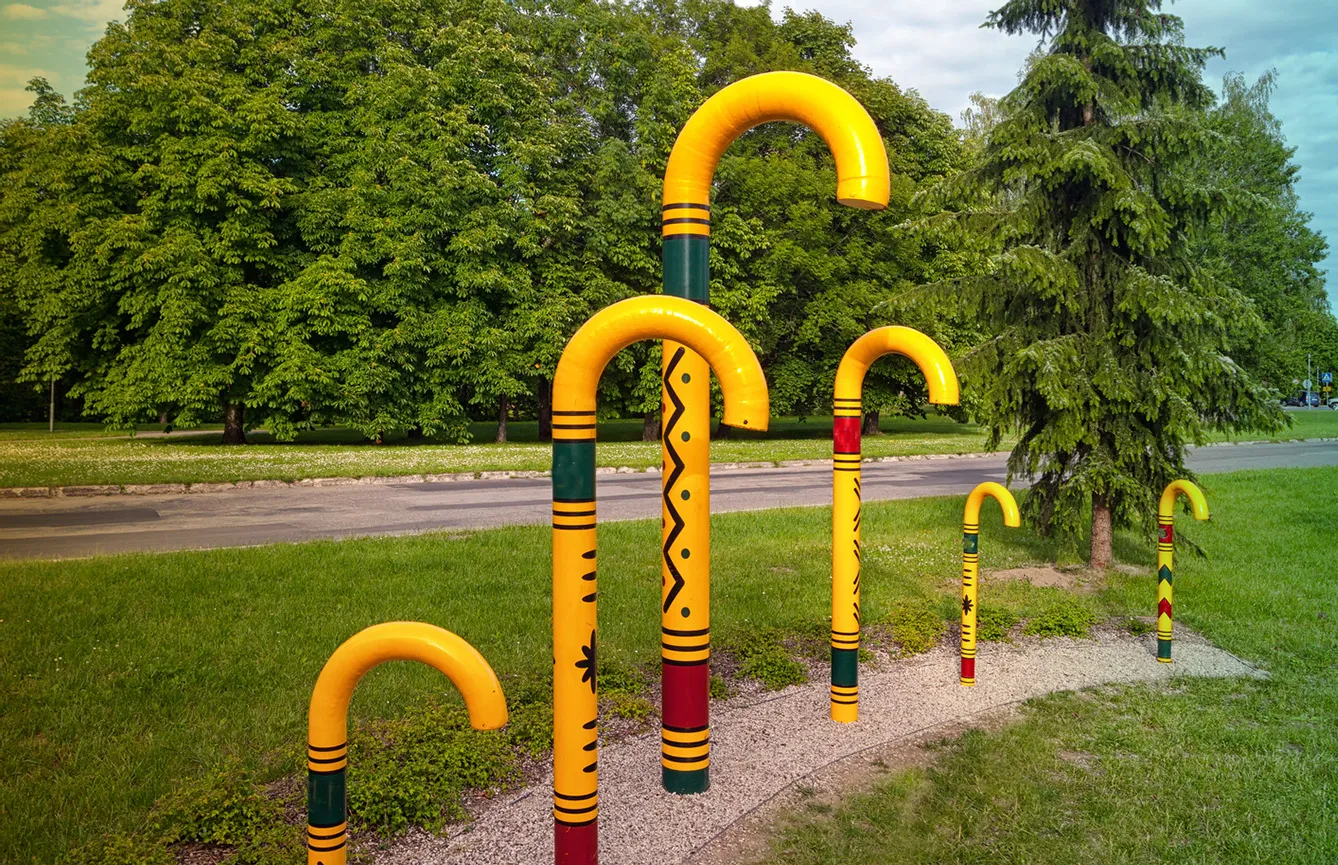Crafted by hand from local materials, the Sigulda walking stick is not just a mere trinket you pick up at the souvenir store. The story of the walking stick – a symbol of the town of Sigulda – dates to the second half of the 19th century. At the time, the first alpine routes appeared in the scenic Gauja Valley, inspired by the trails in Europe’s leading mountain resorts. The tradition of crafting walking sticks was born out of necessity – hikers needed support to navigate the challenging terrain, and skilled locals spotted an opportunity.
Since then, the trails have become more accommodating, but the walking stick remains a popular item to bring back from Sigulda – the outdoor wonderland on the hilly and forested banks of the Gauja River. In 2017, the craft of making walking sticks was added to Latvia’s List of Intangible Cultural Heritage.
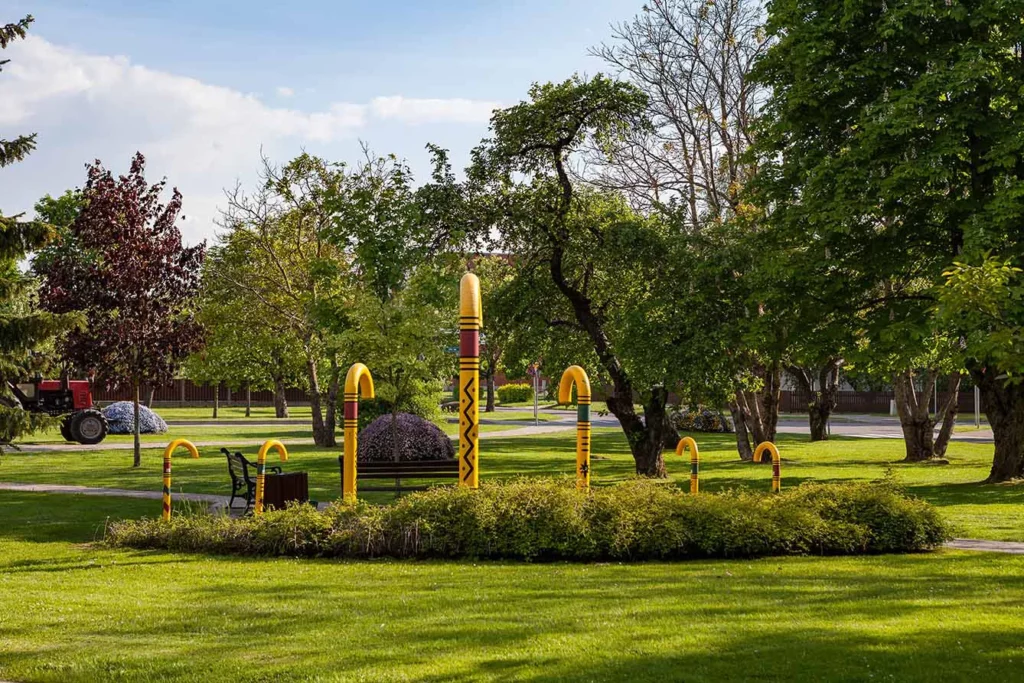
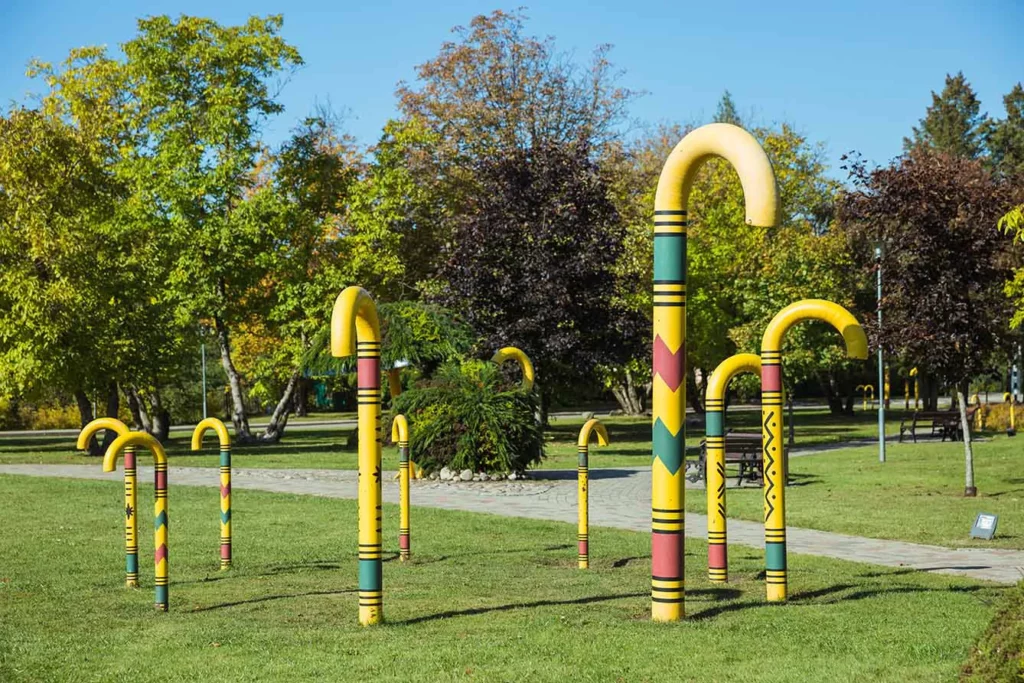
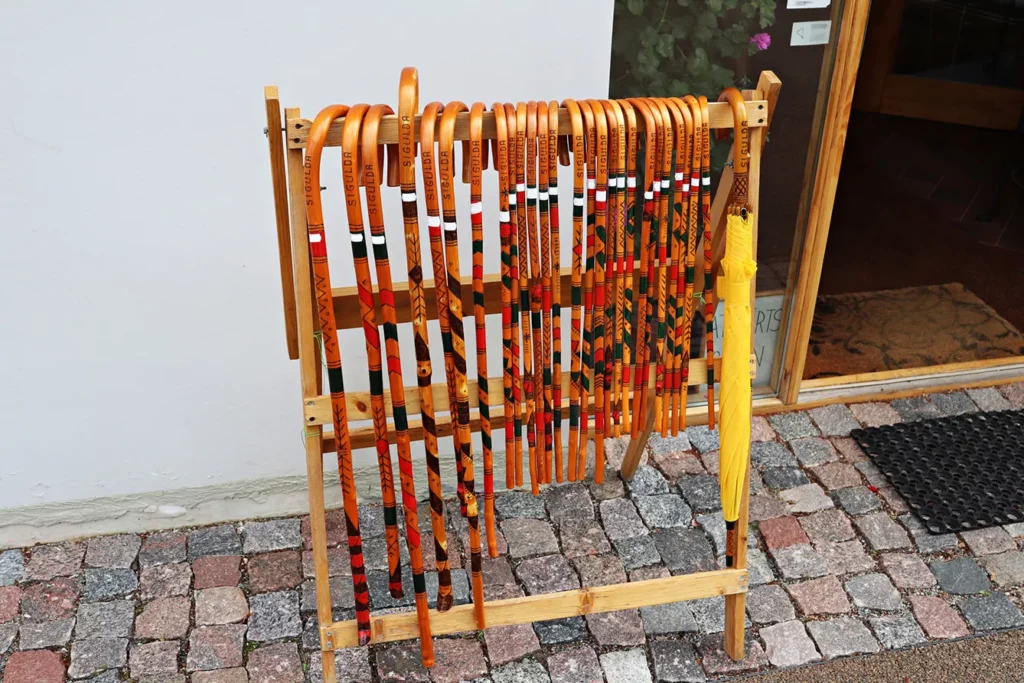
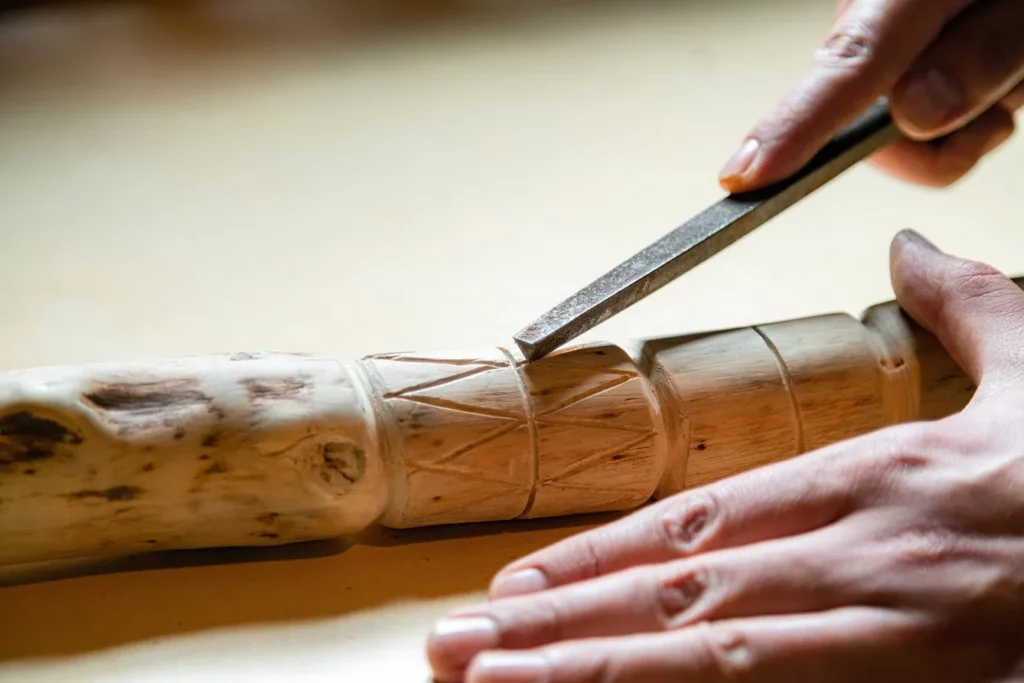
The evolution of the revered Sigulda walking stick
The original pieces were made from hazel wood and were visually minimalistic. Makers only peeled the handle, leaving the rest of the bark intact. It wasn’t until the 1930s that the walking sticks acquired the decorative ornaments they’re known for today – the name of Sigulda, ancient and abstract patterns. Those were the years of a widespread campaign promoting local tourism when national pride was particularly encouraged.
Gradually, as the trails developed, the need for walking sticks decreased, and the sticks shrank in size. Today, they come in many sizes, from tiny pieces to put in your pen holder to large ones that retain their original function. Along the way, they’ve also acquired color. The green and red touches and varnish are said to have originated in the Soviet years in light of tourists’ taste for color.
Learning about the treasured Sigulda walking stick tradition
Two attractions help in understanding the significance of the walking stick to Sigulda. The Walking Stick Park is a pretty outdoor display of the craft item, and the Walking Stick Workshop invites visitors to witness the artisans working their magic. They can also choose to craft their own sticks. Apprentices are welcome to ensure the traditional practice is sustained well into the future.
The artisans must be well-versed in the properties of different types of wood and physically able to work long hours with their hands. They source their own wood, cut, peel, bend, “massage,” polish, and decorate the sticks to perfection.
The workshop is on the grounds of the Sigulda Castle Complex, which now houses a creative quarter with several studios. Next door, visitors can make jewelry, paper, ceramics, and other handicrafts. This is just one of the numerous places to visit in Sigulda – the gateway to Gauja National Park and a magnet for adventure seekers.
At less than an hour’s drive from Riga and accessible by train, Sigulda is a much-loved day trip destination but merits a longer stay. Along with the hiking trails, walking-stick-related sites, and castle, the town is home to a bobsleigh and luge track, outdoor adventure parks, and the renowned Turaida Museum Reserve – Latvia’s most visited museum, which focuses on archaeology and folklore. One of the must-dos when visiting Sigulda is taking the cable car across the Gauja Valley. Alternatively, more adventurous souls can opt for the zipline.


